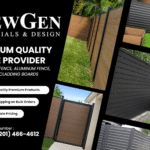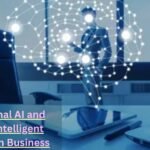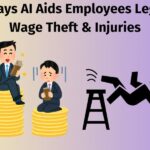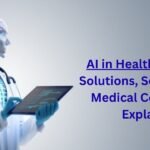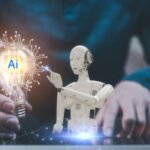Science has always been a visual storyteller. From Leonardo’s anatomical sketches to the colour-coded brain scans of today, pictures have shaped how we understand the world. Yet the modern scientist faces a new challenge: data. Gigabytes of it. Oceans of numbers that resist easy explanation.
Turning that flood into something people can see and grasp is no small feat. It takes precision, design, and often, a lot of patience. This explains why so many researchers now look for tools that do some of the heavy lifting for them.
Among them are design platforms with open APIs, such as VistaCreate, which let scientists generate visuals directly from data pipelines. A biologist can plug in results, call a simple command, and out comes a clean, formatted figure ready for a journal submission. What once took half a day now takes minutes. Not magic, simply smart integration.
The age of data needs the language of images
More than three million scientific papers are published every year, according to Scopus. Each adds more data to an already overflowing archive. Without visuals, those numbers and models are almost unreadable. The right graphic can turn a dense matrix into an elegant idea.
During the pandemic, for instance, those curves showing infection rates did more to shape public understanding than entire press briefings. Epidemiology turned visual, and people finally saw what exponential growth really meant.
That lesson stayed. Across disciplines, visuals are not decoration; they are translation. They make ideas travel further and faster. Researchers even joke that a well-drawn figure is the academic version of a viral tweet.
What strong visuals achieve:
- They clarify complex relationships at a glance.
- They make data accessible across languages and fields.
- They build trust by showing, not telling.
From hand-crafted charts to automated creation
Ask any senior researcher how they used to prepare figures twenty years ago. You will probably hear stories involving Illustrator, late nights, and too much coffee. Each curve adjusted by hand, each label painstakingly aligned. It was craftsmanship, slow, beautiful, and exhausting.
Then automation arrived. Data tools learned to draw. In bioinformatics, software now renders 3D protein structures in seconds. Climate scientists feed temperature readings into scripts that build maps in real time. The idea is simple: let the computer handle repetition so the human can focus on meaning.
Automation also standardises quality. Journals want figures that follow rules such as consistent fonts, sizes, and colour palettes. Machines are good at rules. They keep every image clean, uniform, and print-ready.
How API integrations changed the lab routine
An API, short for “application programming interface,” is a translator between software tools. It allows one program to ask another to perform a task. In research, that means a data-analysis script can tell a design service, “Make this graph for me.”
Picture an ecology lab measuring river quality every week. Instead of exporting spreadsheets, researchers run a script that updates charts automatically. The next morning, they open their dashboard and see new graphs reflecting yesterday’s readings. Publishing those results becomes nearly frictionless.
This integration also builds transparency. Each image stays connected to the data that created it. When the dataset changes, the figure updates too. Mistakes become visible sooner, which is good science in action.
The biggest benefits of automation
- Fewer repetitive design steps and late-night formatting.
- Lower risk of visual inconsistencies across publications.
- Faster collaboration between scientists and editors.
- A clearer connection between raw data and what readers see.
When automation meets ethics
Ease of use brings responsibility. An algorithm can make a stunning chart and still mislead if the parameters are wrong. Machines draw; they do not understand. Interpretation remains a human task.
That is why transparency matters. Journals increasingly ask authors to state which tools they used to create visuals, just as they disclose statistical methods. Readers can then assess the reliability of both the data and its presentation.
There is also the question of visual honesty. Everyone has seen maps with colour scales so dramatic they resemble weather warnings. Automation helps prevent that, keeping designs consistent and data-driven. Still, someone has to ask: Does this picture tell the truth?
Lessons from outside the lab
The trend is not limited to science. Sports analysts automate charts showing a player’s performance over a season. Economists use dashboards that redraw markets in real time. Even art historians visualise centuries of stylistic influence.
All these examples share the same core challenge: transforming complexity into clarity. Scientists face higher data density, yet the same human need remains—to see to understand.
The next chapter in visual science
What is coming next looks less like design and more like conversation. Data and visuals will interact directly. A change in the experiment will update the chart, which can then spark a new hypothesis.
Some universities are already experimenting with living figures that refresh automatically as new data arrives. Imagine a paper that never freezes in time but evolves with the research itself. Readers could explore results, zoom in, toggle variables, and watch theories take shape.
That might sound futuristic, yet so did online publishing once. Every scientific revolution begins quietly, often with a technical shortcut that becomes a new habit.
Conclusion
Automation is not replacing researchers or editors. It is clearing the clutter. Visualisation remains the bridge between discovery and understanding. Now that the bridge is simply stronger and easier to cross.
Science has always sought sharper ways to see reality. The tools have changed, the goal has not. When data begin to draw themselves, the picture of knowledge may finally come into focus.


